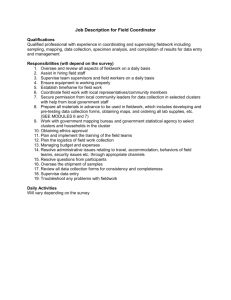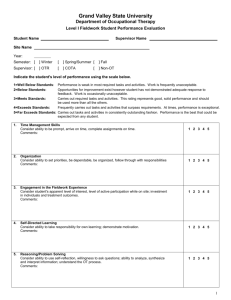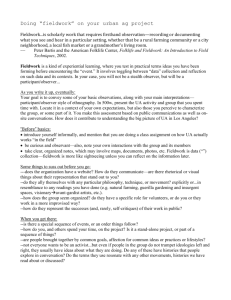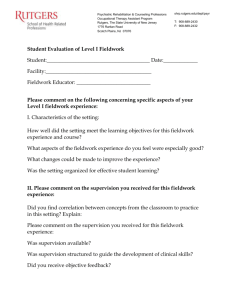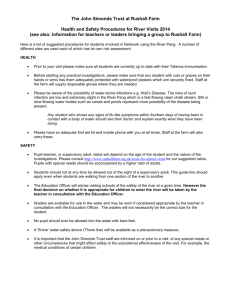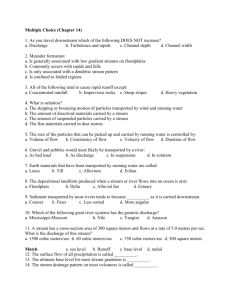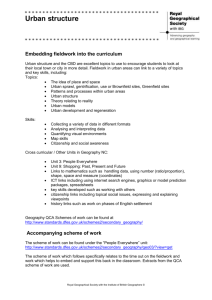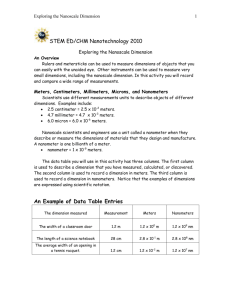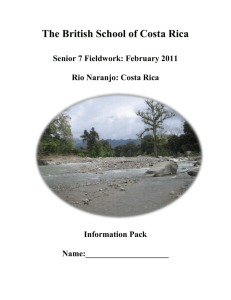Some_Safety Considerations when using USB
advertisement
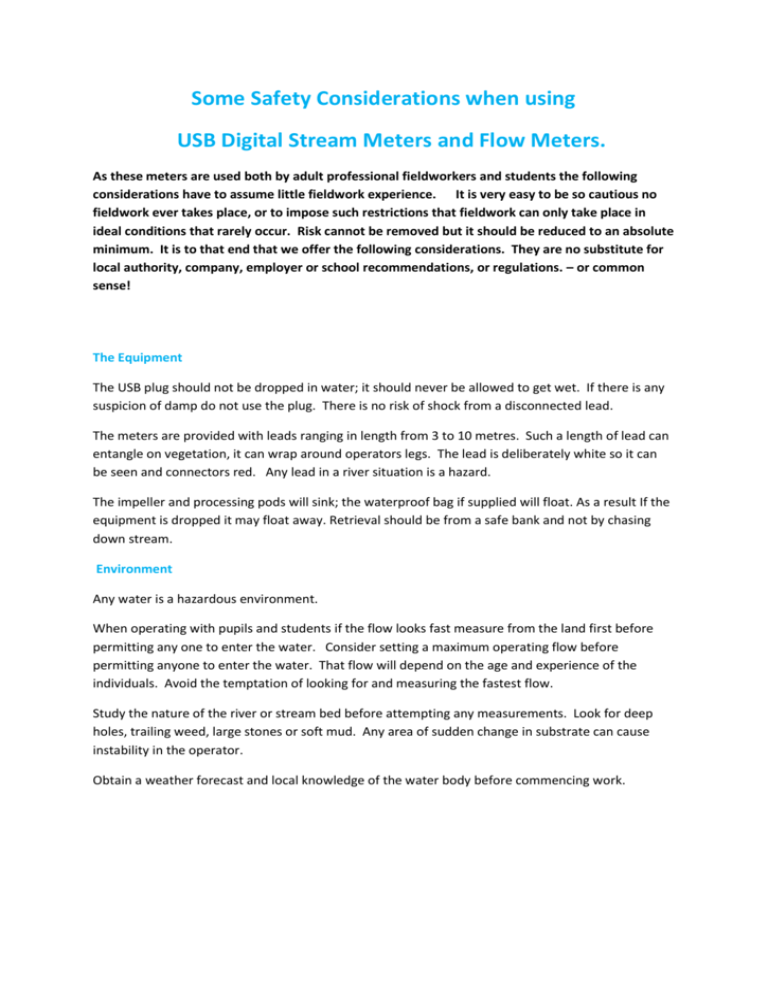
Some Safety Considerations when using USB Digital Stream Meters and Flow Meters. As these meters are used both by adult professional fieldworkers and students the following considerations have to assume little fieldwork experience. It is very easy to be so cautious no fieldwork ever takes place, or to impose such restrictions that fieldwork can only take place in ideal conditions that rarely occur. Risk cannot be removed but it should be reduced to an absolute minimum. It is to that end that we offer the following considerations. They are no substitute for local authority, company, employer or school recommendations, or regulations. – or common sense! The Equipment The USB plug should not be dropped in water; it should never be allowed to get wet. If there is any suspicion of damp do not use the plug. There is no risk of shock from a disconnected lead. The meters are provided with leads ranging in length from 3 to 10 metres. Such a length of lead can entangle on vegetation, it can wrap around operators legs. The lead is deliberately white so it can be seen and connectors red. Any lead in a river situation is a hazard. The impeller and processing pods will sink; the waterproof bag if supplied will float. As a result If the equipment is dropped it may float away. Retrieval should be from a safe bank and not by chasing down stream. Environment Any water is a hazardous environment. When operating with pupils and students if the flow looks fast measure from the land first before permitting any one to enter the water. Consider setting a maximum operating flow before permitting anyone to enter the water. That flow will depend on the age and experience of the individuals. Avoid the temptation of looking for and measuring the fastest flow. Study the nature of the river or stream bed before attempting any measurements. Look for deep holes, trailing weed, large stones or soft mud. Any area of sudden change in substrate can cause instability in the operator. Obtain a weather forecast and local knowledge of the water body before commencing work. The Fieldworkers Age, size and experience are the key factors. Clothing is also important. Waders can be a safety issue with smaller people as they can make someone float or, when full, stop someone leaving the water in a hurry. Working alone should never be considered. School groups should normally have two people together measuring in the water and a separate person on the bank with the computer. This is per group as there should always be the overall observer on the bank as well. Physical Precautions Many teachers consider it necessary for pupils to wear some form of buoyancy aid when operating in or near the water especially when wearing heavy clothing. A rope across a river just below the sampling point can be considered. A throwing aid and line is an alternative and some employers insist on one being immediately available at any site involving water. Standard notification and permission procedures for access to land and undertaking fieldwork should be taken. Included in this is establishing the nature of any insurance. It is easy to take for granted mobile phone coverage. Field work sites are often not within reception area. Educational Field Equipment and EFE & GB Nets cannot be responsible for the safe use of the equipment they manufacture as there are so many variables involved which are beyond their control or influence. If you observe new safety considerations that you think should be included in this or similar notices then do please contact us.
